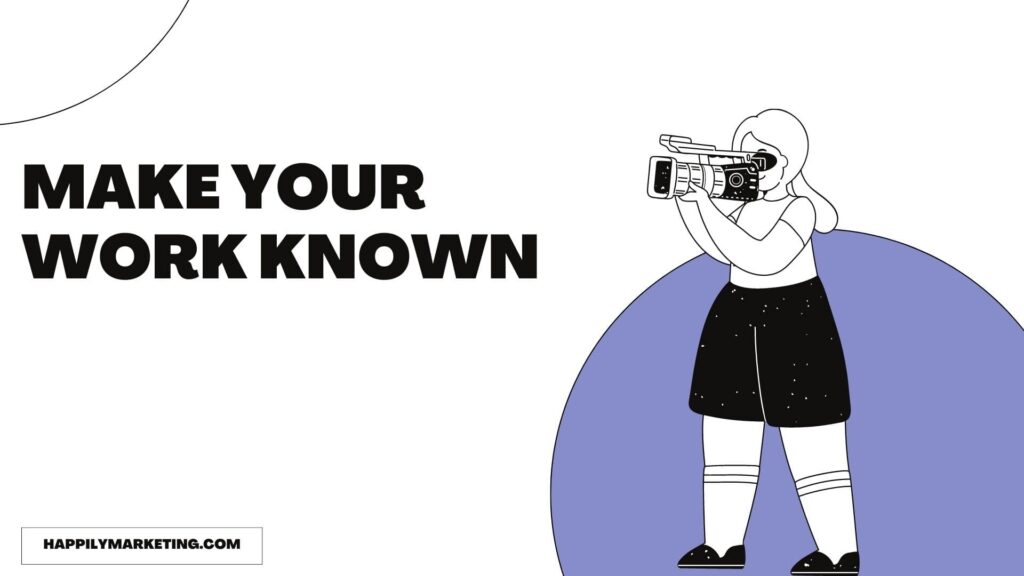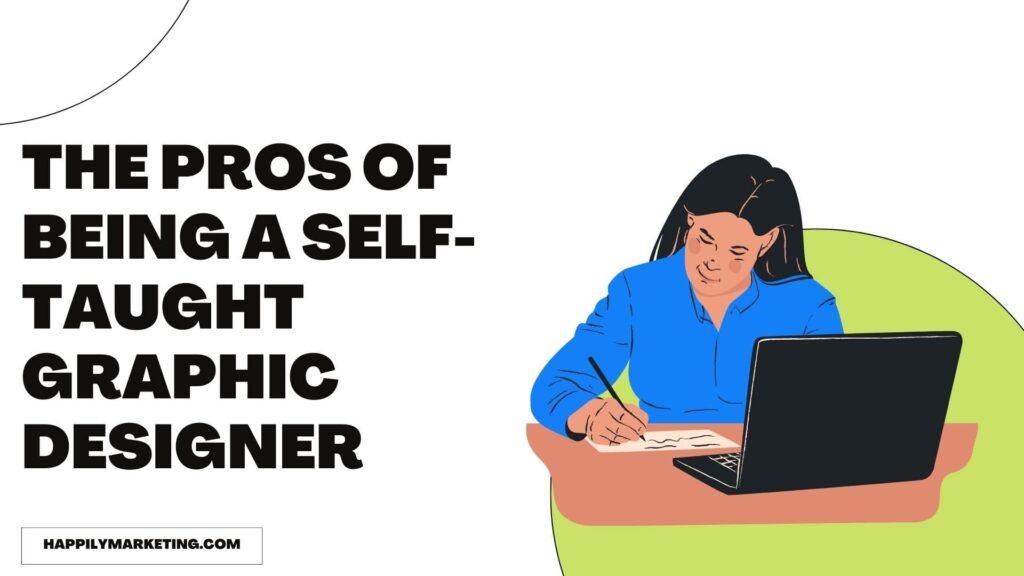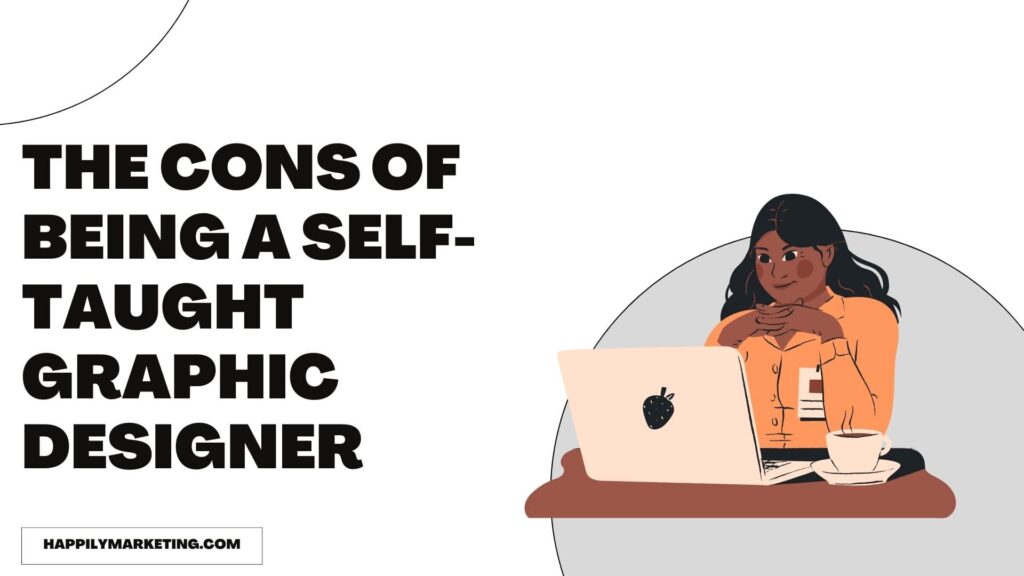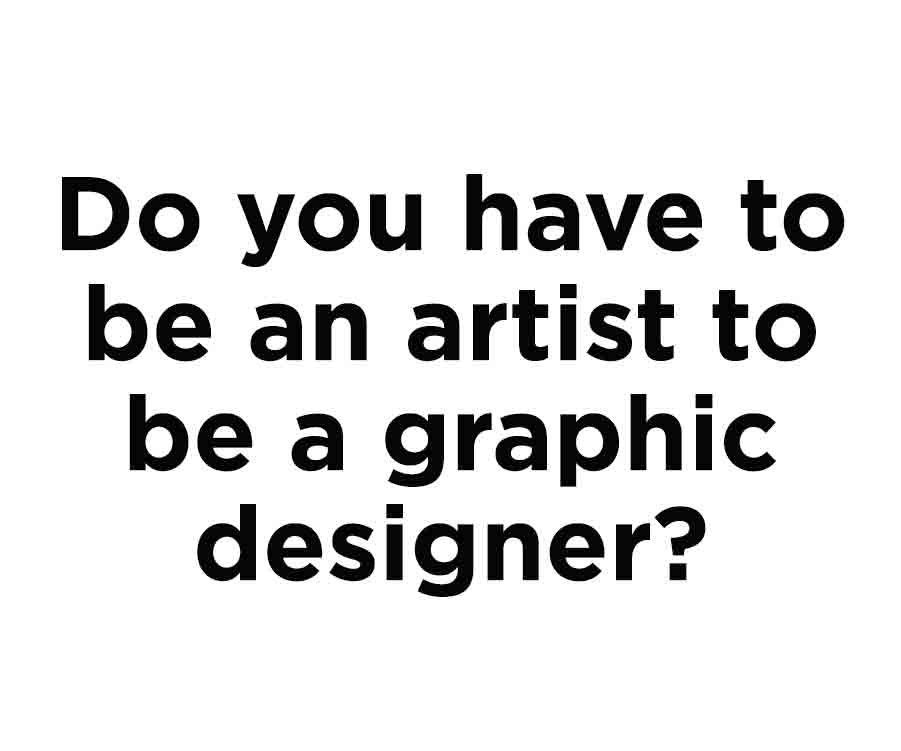Every designer has searched for google the critical question, Can you be a self taught graphic designer? Well, guess what? We have covered this topic for all future designers and people looking to make a career in any design field.
Table of Contents
- Is It Possible To Teach Oneself Graphic Design?
- Learn Graphic Design Theory
- Internalize the Graphic Design Process
- Choose Your Tools Wisely.
- Develop a Portfolio
- Make Your Work Known
- Create a Network With Other Graphic Designers.
- Continue To Learn And Develop.
- The Pros of Being a Self-Taught Graphic Designer
- The Cons of Being a Self-Taught Graphic Designer
- Conclusion
Graphic design is a field that has been traditionally seen as requiring a college degree. However, with technology and the internet today, it’s easier than ever to become a self-taught graphic designer.
There are endless online resources available to learn the ropes of graphic design, and many successful designers have no formal education in the field. So if you’re, if you’re interested in pursuing a career in graphic design but don’t want to go to college for it, don’t worry – you can still achieve your dreams. So here’s everything you need to know about becoming a self-taught graphic designer.
Is It Possible To Teach Oneself Graphic Design?
Becoming a self-taught graphic designer is possible, but it is not easy. The field of graphic design is very competitive, and most employers prefer to hire designers who have completed formal education. However, if you have natural talent and are willing to put in the hard work required to learn the trade, you can become a self-taught graphic designer.
As long as you love design, are passionate about connecting with others, and are ready to put in the time and effort, graphic design may be a rewarding profession.
Learn how to become a self-taught graphic designer in 2023 by following the instructions below.
Learn Graphic Design Theory

If you want to be a self-taught graphic designer, the first step is to learn the basics of graphic design. Understand design principles, such as balance, hierarchy, and unity.
These basic principles decide the success of a design, so it is essential to learn and practice them.
Shape, Spacing, and Rhythm
Shapes, spacing, and rhythm are design’s three essential elements. First, they create visual stability and add interest to a design.
When you understand how to use shapes, spacing, and rhythm in your designs, you can create visually appealing and well-balanced designs.
Color Theory
Color theory is the study of how colors interact with each other. It is an essential tool for designers because it helps them create harmonious color schemes.
Understanding color theory will help you create beautiful and practical designs.

Typography
Typography is the art of choosing and arranging typefaces, an essential skill for every graphic designer, as the right font can make or break a design.
There are thousands of different typefaces available, each with its personality. Therefore, learning how to select a suitable typeface for each project is essential.
Layout
The layout is how elements are arranged on a page. A good structure is essential for creating designs that are easy to understand and visually appealing.
There are many different layout techniques; practicing is the best way to learn. Experiment with different layouts and see what works best for each project.
Internalize the Graphic Design Process

Graphic design is not just about colors, shapes, and patterns, and it is more about solving problems visually. People who study graphic design learn how to solve visual issues. The best way to teach yourself this skill is by understanding the visual problem process.
Visual and Conceptual Problem Solving
The first step in solving a visual problem is understanding its concept. What are you trying to communicate with your design? Once you clearly understand the idea, you can start brainstorming visual solutions.
What is the difference between a visual concept and a pure visual solution? It’sIt’s more than just a pretty picture. It’sIt’s the combination of a design and an idea, which is presented in context to solve a problem.
The Design Process
Learning to sketch the design you have in mind is an essential skill for any graphic designer. This will help you communicate your ideas to others and get feedback on your plans.
After you have sketched out your design, it is time to start creating the final version, where you will use software to create the graphics and layouts.
The most important part of the design process is the feedback loop. This is when you show your design to others and get their input. After getting feedback, you can make changes to your design and improve it. It is also essential to learn graphic design history.
Real-World Graphic Design Application

The first step to solving real-world graphic design problems would understand the client’s needs. What are they trying to achieve with their design? Once you clearly understand the client’s goals, you can start brainstorming visual solutions.
Next, you will need to create a mood board to help communicate your ideas to the client. This collection of images, colors, and textures will help the client see your vision for the project.
Once the mood board is approved, you can start working on the final design. This is where you will use software to create the graphics and layouts. After the design is complete, you will present it to the client for approval.
You can start by designing logos for your friend’s or family members’ businesses. This will give you some experience and portfolio pieces to show future clients. You can also look for online design contests to participate in. These are great ways to get exposure and build your portfolio.
Choose Your Tools Wisely.

Once you have the basic skills, you must choose the right project tools. Many different software programs are available, each with its strengths and weaknesses. Therefore, it is crucial to select the right tool for each project.
For example, if you are creating a logo, you will need a vector graphic editor like Adobe Illustrator. In addition, you will need a web design program like Adobe Photoshop to make a website.
If you are inclined toward UI design, you may use Figma, a tool that allows designers to create user interfaces for web and mobile apps.
When starting, it is crucial to use the most comfortable software. As you gain experience, you can branch out and try new programs.
You can also try using CANVA, an online platform that helps you create designs for social media, presentations, and more.

No matter what tools you use, the most important thing has fun and experiment. Graphic design is a creative field, so don’t be afraid to try new things.
Develop a Portfolio

Once you have a good command of design tools, it’s time to collect some of the best artwork you did as a freelancer and put it in an online portfolio. It will help the client to easily see your work and decide if you are a good fit for their project.
If you don’t have real-world experience, you can create practice projects to add to your portfolio. For example, you can redesign a website or create a brand for a fictional company.
Websites like Behance or dribble are great places to showcase your work. You can also create a personal website to showcase your portfolio.
Wix and Bluehost are some excellent services that can help you create your stunning portfolio site.
A well-designed portfolio will help you land more clients and better-paying jobs. So take the time to create a portfolio that you are proud of.
Make Your Work Known

Once you have your portfolio assembled, it’s time to start marketing your work. You can send your portfolio to friends, family, and potential clients. You can also post your work on social media and design websites.
If you want to get hired by a specific company, you can research their website and look for job openings. Once you find a job you are interested in, you can apply by sending your resume and portfolio.
Create a Network With Other Graphic Designers.

You can also attend design events and meet-ups to network with other designers. This is a great way to meet potential clients and learn about new opportunities.
The most important thing is to get your work out there. The more people see your work, the more likely you will find success as a graphic designer.
Continue To Learn And Develop.
The world of graphic design is constantly changing. New software programs are being released, and recent trends are continually emerging. To be a successful designer, you need to keep up with the latest changes in the industry.
One way to stay up-to-date is to read design blogs and magazines. You can also follow graphic designers on social media. This will help you see the work that they are doing and learn from their experience.
It is also essential to continue to develop your skills. As your portfolio grows, you can start to specialize in specific areas of design. For example, you can focus on web design, logo, or packaging design.
The most important thing is never to stop learning. The more you know, the more successful you will be as a designer.
As we have discussed how one can become a self-trained designer, it is our duty to share the pros and cons of being a self trained designer.
A self trained designer and a professional designer who has attended college for his degree have different pros and cons. Let us see what they are:
The Pros of Being a Self-Taught Graphic Designer

One of the great things about being a self-taught designer is that you can learn at your own pace. You’reYou’re not beholden to a set curriculum, and you can pick and choose which resources you want to use. You can also tailor your learning to your interests and goals. Additionally, self-directed learning can help you develop a strong work ethic and a sense of initiative.
You Can Save Money
The biggest pro of being a self-taught graphic designer is that you can save a lot of money. College is not cheap, and if you can teach yourself the same material, why would you take on that extra debt? In addition, there are plenty of free online resources where you can learn about graphic design principles, graphic design software tutorials, and more from tutors who have experience teaching graphic design online.
You Can Learn at Your Own Pace
One of the best things about being a self-taught graphic designer is that you can learn at your own pace. This means that you can take as long as you need to master a particular skill or concept and go back and review the material as often as necessary. In addition, if you need to learn a new skill to keep up with the changing graphic design field, you can do so without waiting for a class to become available or worrying about getting behind in your studies.
You Can Be More Creative
When you’re not bound by the rules outlined in traditional educational institutions, you have the freedom to be more creative in your designs. This is because you don’t have to adhere to specific guidelines—you can experiment and explore as much as you want without worrying about failing or receiving a bad grade.
Of course, creativity is not necessarily synonymous with good design. But the freedom to experiment does allow self-taught graphic designers to push the boundaries and come up with innovative designs that might not otherwise be possible.
The Cons of Being a Self-Taught Graphic Designer

While there are several advantages to being a self-taught graphic designer, there are also a few disadvantages. One of the most significant disadvantages is that you may not have the same experience as a Graphic Designer who has undergone a formal training program.
This can put you at a disadvantage when competing for jobs. Another disadvantage is that you may not have a strong portfolio, which is often required to get hired as a Graphic Designer.
You Might Not Be As Good As Someone Who Went to School
There is no guarantee that you will be successful if you are self-taught. While you may have all the passion and determination in the world, without formal training, you might not have the skillsets required to be a successful graphic designer. However, if you want to be a self-taught graphic designer, you need to put in the extra effort to ensure that your work is up to par with those who have had formal training.
You Might Not Be Able to Find a Job As Easily
There are countless advantages to being a self-taught graphic designer. However, there are also some disadvantages that you should be aware of. One of the most significant disadvantages is that you might not be able to find a job as easily.
Many employers prefer to hire candidates who have completed a graphic design program at an accredited institution. However, they often view self-taught designers as less qualified and less capable than those who have gone through a formal program.
Of course, this isn’t always the case, and plenty of self-taught designers have found successful careers in the field. However, it is something to be aware of, and that you’ll need to overcome if you want to be a self-taught graphic designer.
You Might Not Be As Connected
There are downsides to being a self-taught graphic designer. One of the biggest is that you might not have the same connections that someone who went to school for graphic design would have. School is a great way to network and meet other designers and professionals in the field who can help you get your foot in the door.

Conclusion
In conclusion, Can You Be A Self Taught Graphic Designer? Yes, you can be a self-taught graphic designer! Many well-known and successful designers have no formal training in graphic design. However, if you want to give yourself the best possible chance of success, it’s worth considering some form of training, whether a degree, diploma, or online course.
There are many free courses and high quality tutorials to learn graphic design, visual design, technical skills, or any new skills.
Bear in mind that a graphic design qualification is no guarantee of success. The most important thing is to have a strong portfolio of work that you can show to potential clients or employers. So if you’re serious about becoming a graphic designer, start working on your portfolio today!







